I know I said the Blue Mountains were my new favorite place in Australia, but I think Avoca Beach is my new new favorite place in Australia. Sorry, Blue Mountains (probably only until I visit you again though).
Though we’ve moved into our own place, Viive and Ian were making a trip to their favorite beach last weekend, and they invited us along. Heck yes. And I’m so grateful to them for taking us. We’ve had a very busy couple of weeks full of adventure, yes, but also full of errands, errands, errands, and so much schlepping of furniture, lamps, heaters, fans, furniture, groceries, kitchen supplies, bathroom supplies, trashcans, side tables, and all of the little things that make a place home, all by hand, all on public transit and on foot.
Fortunately we were able to get the biggest things delivered, and our couch arrived the night before this beach trip! The door to our flat is a sliding door, like a barn door, so we were able to take the door off completely to try and get the couch in, but still. We got half the couch in two different times before figuring out the winning spatial solution involving a twist just so and a lift here and all of this with me having only one functional thumb to grip with. It was fun! But then we sat on it and watched a movie on the laptop and everything was lovely.
Anyway. The beach. The glorious wondrous peaceful relaxing idyllic silly beach.
I’m going to do a series of photos at some point called “me trying to lick things.”
Australia has a lot of sedimentary rock. If you remember, the Blue Mountains are old sandstone “mountains” which are actually high plateaus carved out by water. Although the base of much of the continent is igneous and metamorphic, much of the continent is covered in a “thin veneer of mainly Phanerozoic sedimentary basins cover much of the Australian landmass (these are up to 7 km thick).” THIN VENEER?? Everything’s relative I guess. In any case, I’m definitely not a geological expert (though I may have aspired to such for a time in high school), so I’m not going to go into details, but the ancient sandstone (mainly set down in the permian and triassic ages) has been faulted, shifted, and lifted over time. Apparently, and I definitely didn’t know this, most of the harbors we have today are actually drowned river valleys, because the sea levels rose thousands of years ago.
The end result of all of these sedimentary deposits + shifting + erosion has been this:
and this:
Avoca Beach (and surrounding areas) are less highly trafficked than a lot of beaches closer to Sydney. But not just because it’s further away – because there’s less sand, and more rock! Beautiful interesting rock! I’m mostly going to let the images speak for themselves.
Check out the surge of the waves as the tide comes in. I guess there’s nothing for scale here, but that main boulder is probably about 10 feet tall:
Aside from us and the few other people wandering the rocks, most of the people off of the sandy area were fishing. I encountered one man who was busily scraping up little seaweeds attached in rocky pools. Upon asking, he said that as the water washed over the pools and retracted back out to sea, the little bits of plant matter would attract the kind of fish he was after, so he was priming the water for his fishing expedition.
What a way to spend a day, picnicking on rocks with family, maybe a couple of beers, waiting for your rod to bend, listening to the waves…
Much of the rocky areas were flat as above, but interspersed were also many beautiful deep pools carved out of the rock, almost supernaturally sunken into the flat surroundings.
Late in the day, at North Avoca Beach, before a tasty dinner of Thai, the early evening light drew out all of the soft deep colors of the sandstones with lovely reflections on the water.
Ben took this shot. It’s perfect:
The little black blips are snails, holding on as water from high waves washes over them.
There was a trio of little girls playing on the rocks as we explored. They were shrieking and jumping and playing with the water, looking for critters in the shallow pools. Maybe examining these snails. So lovely. Must go back to Avoca.
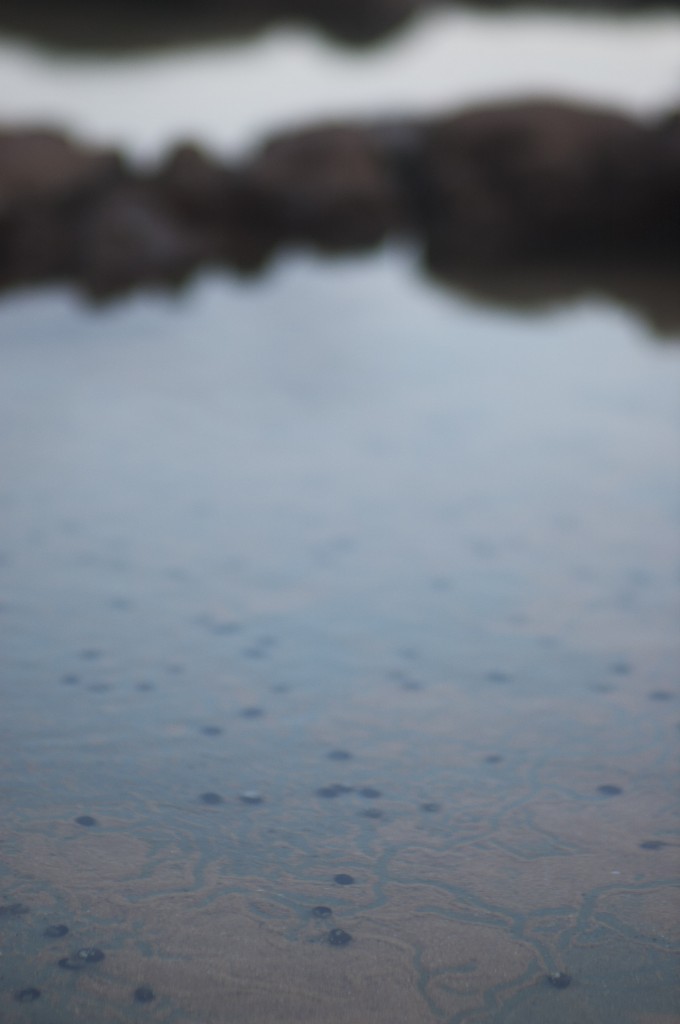

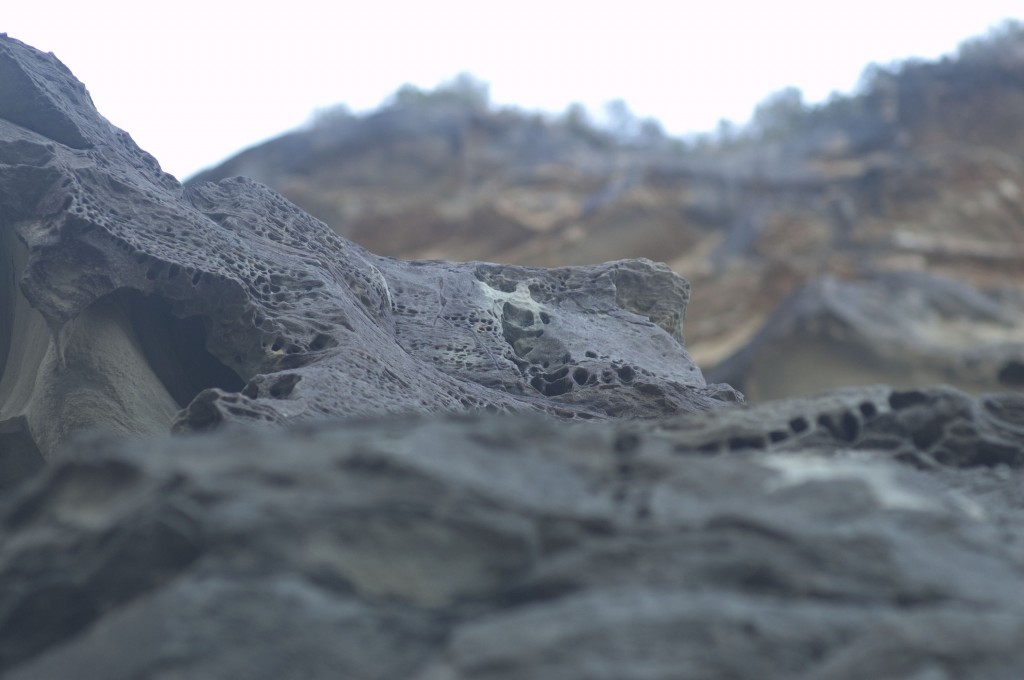
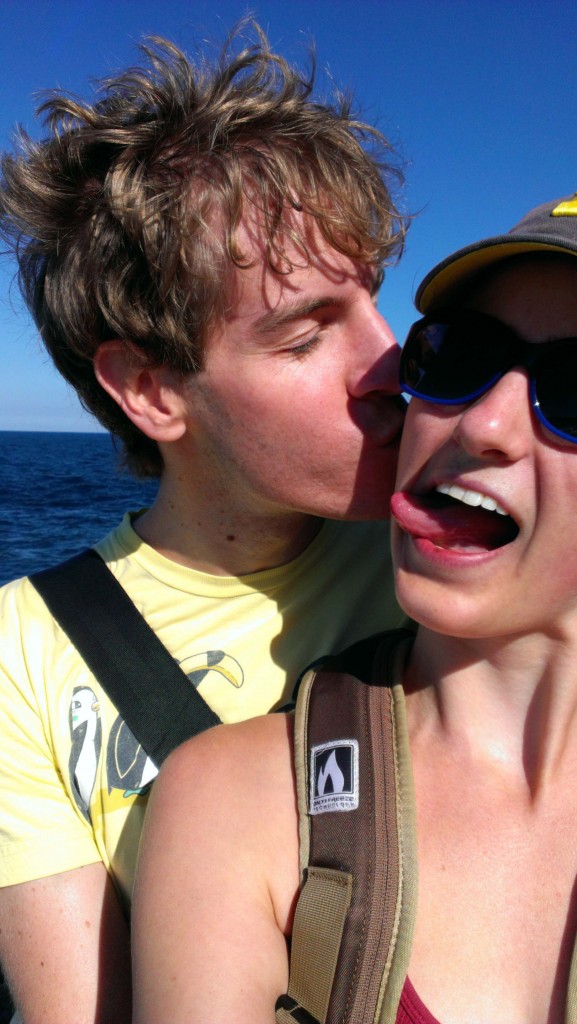
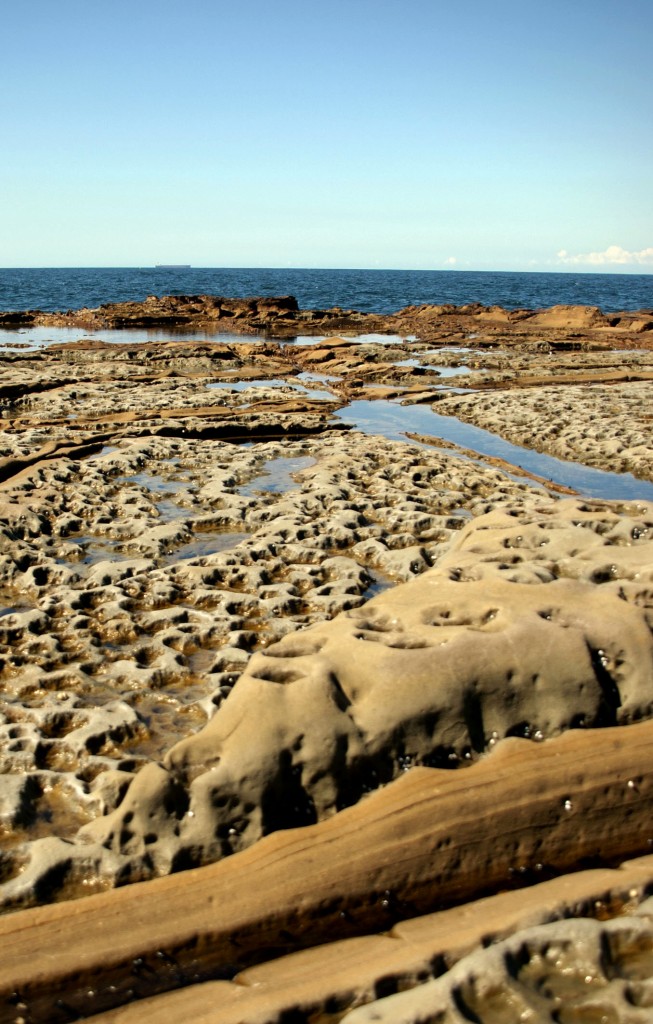
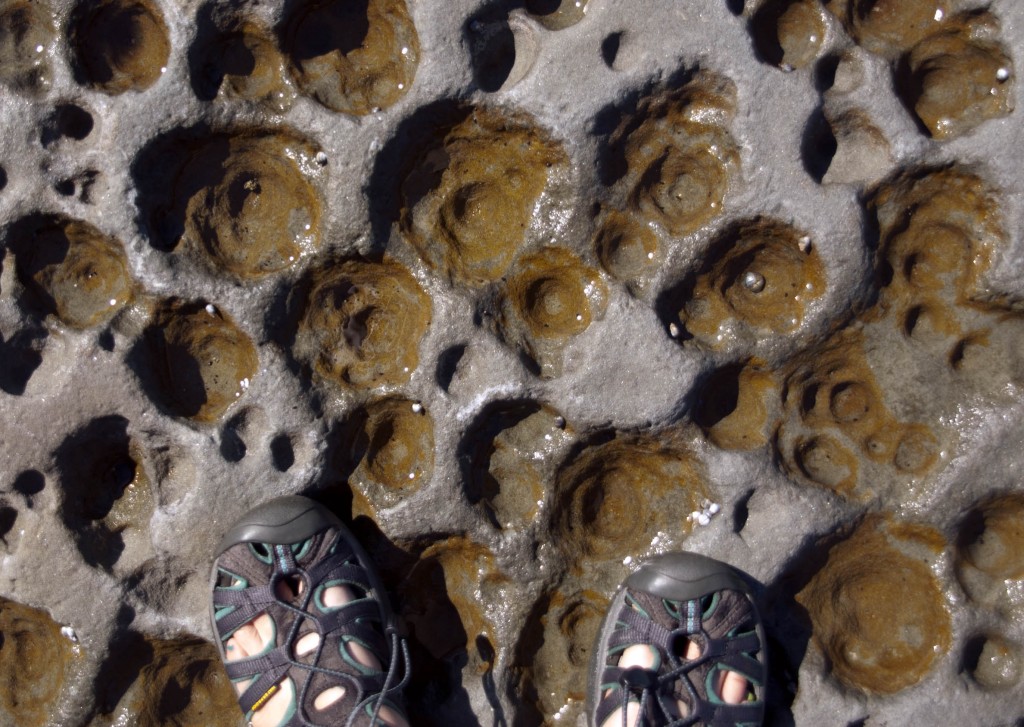
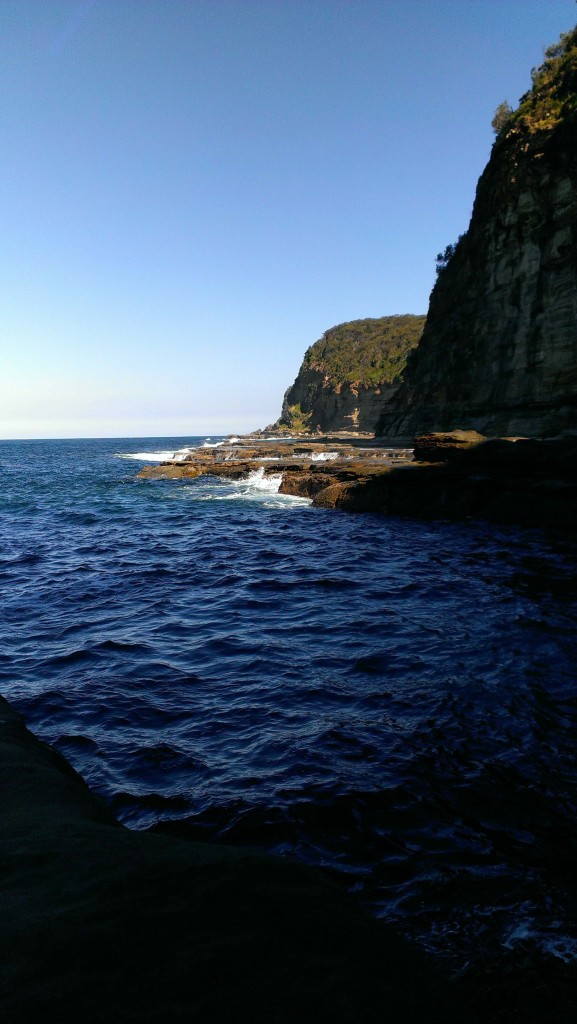
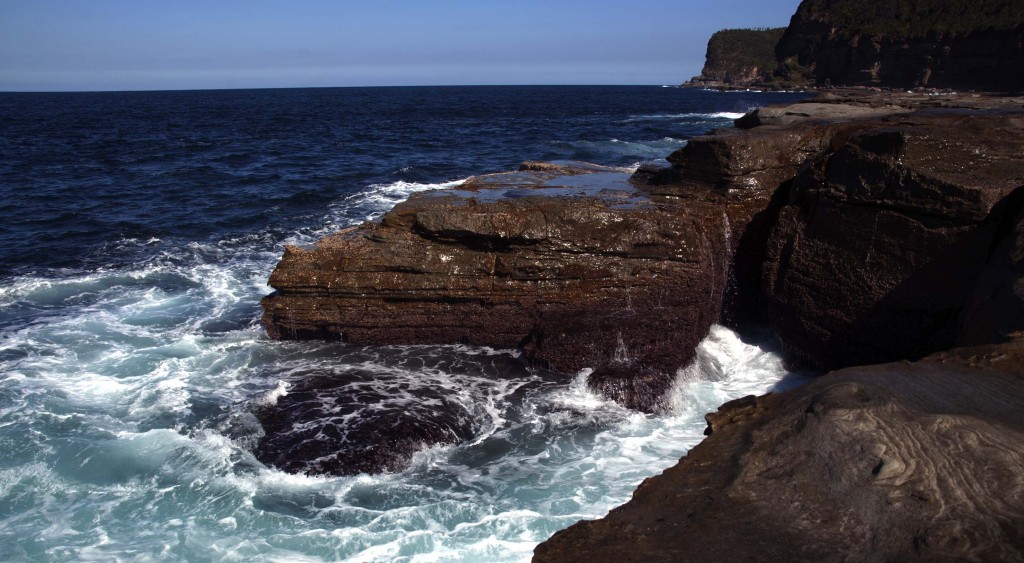
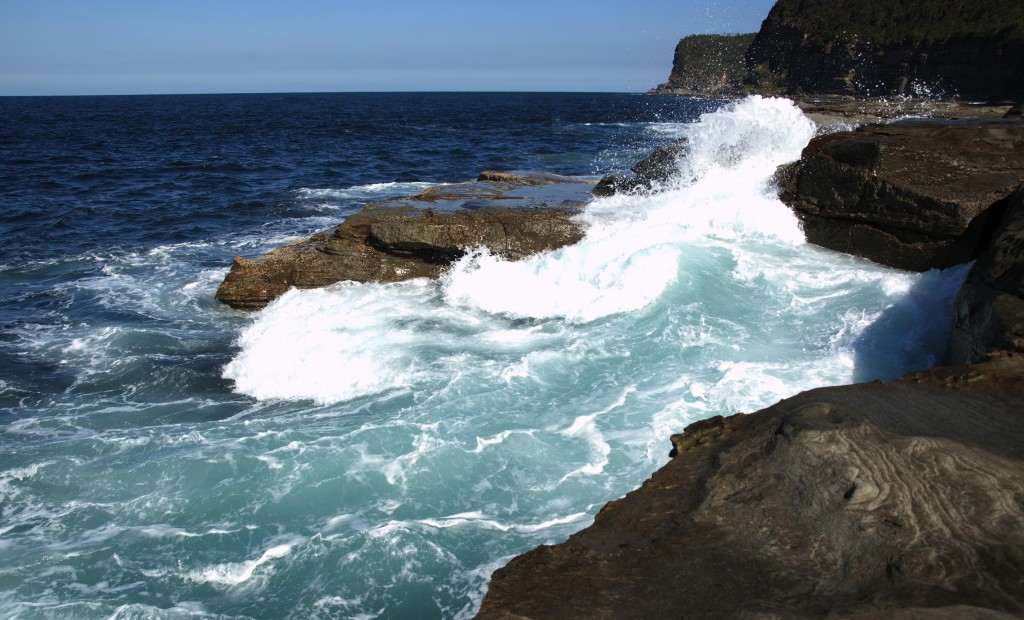
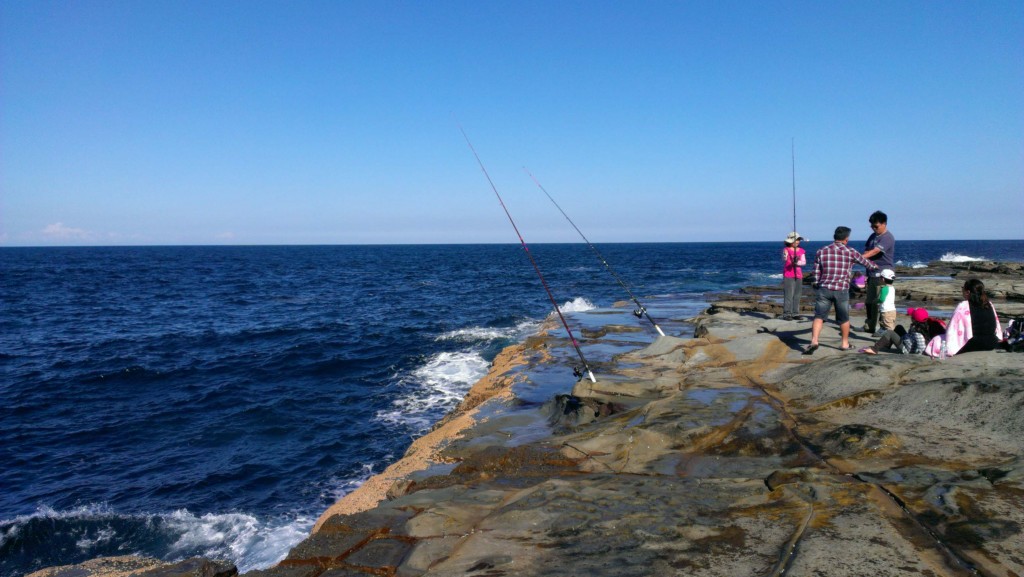
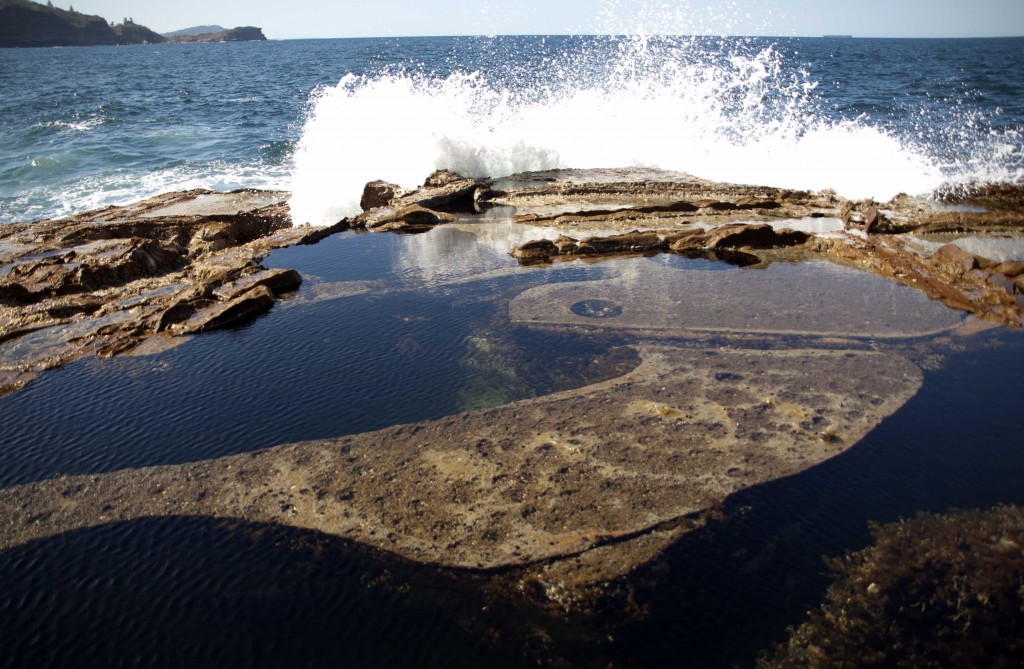
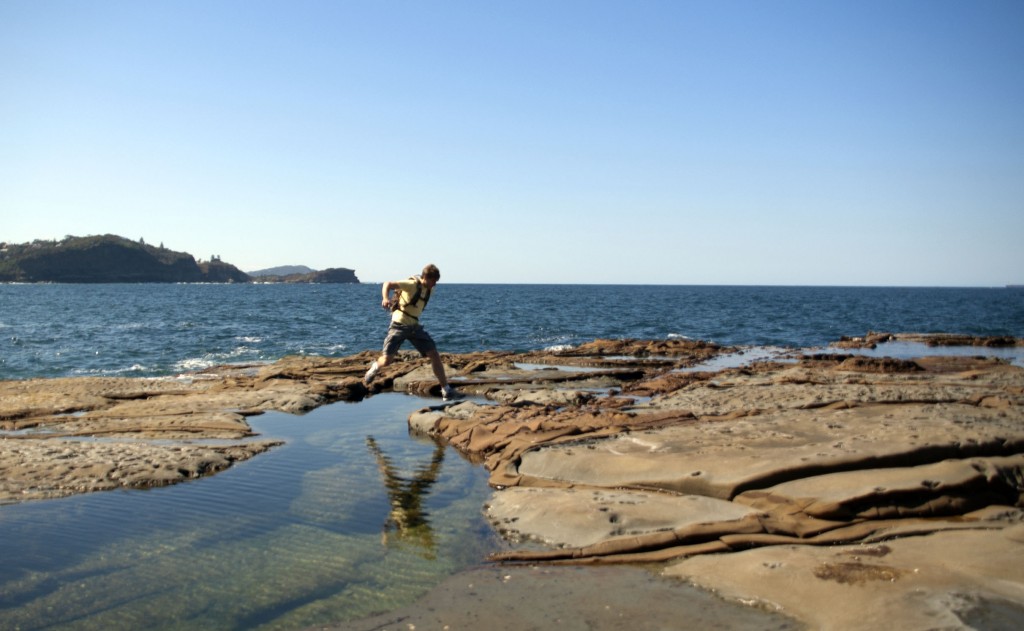
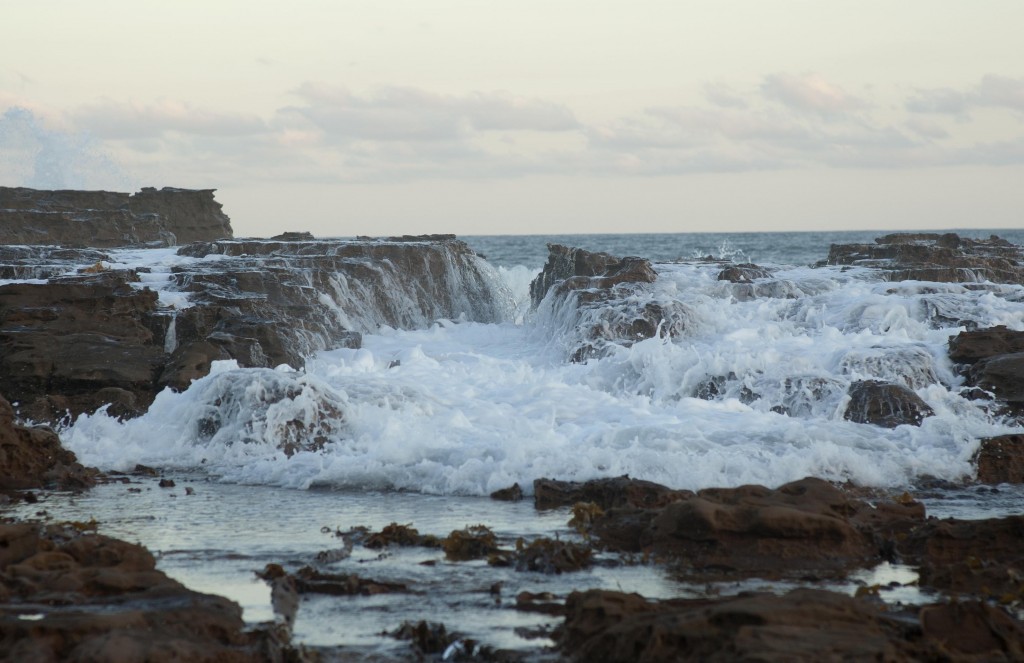
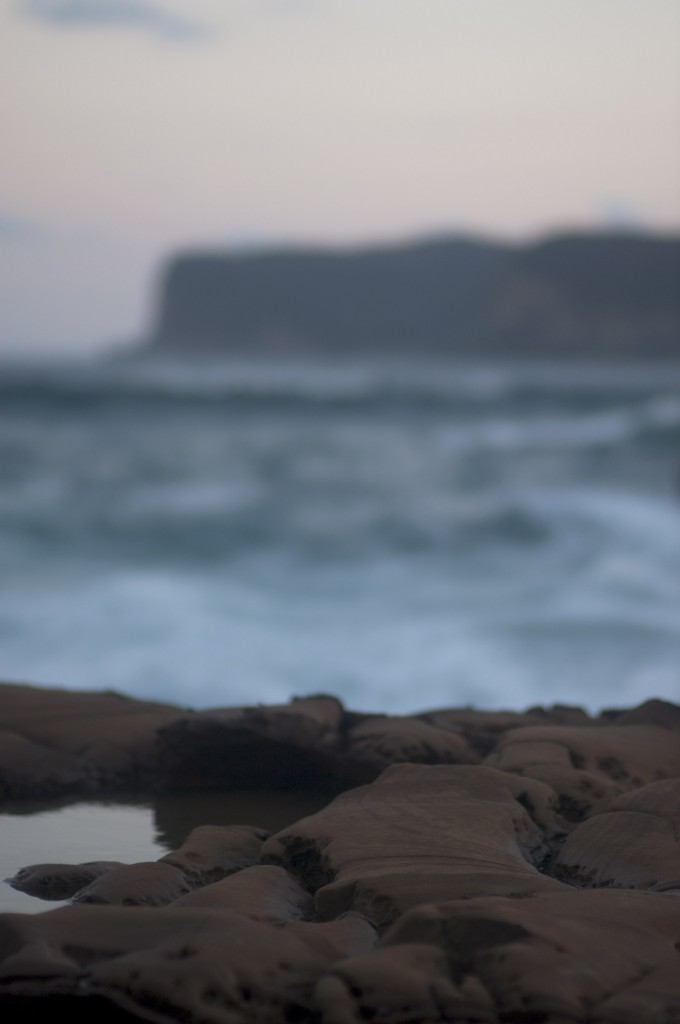
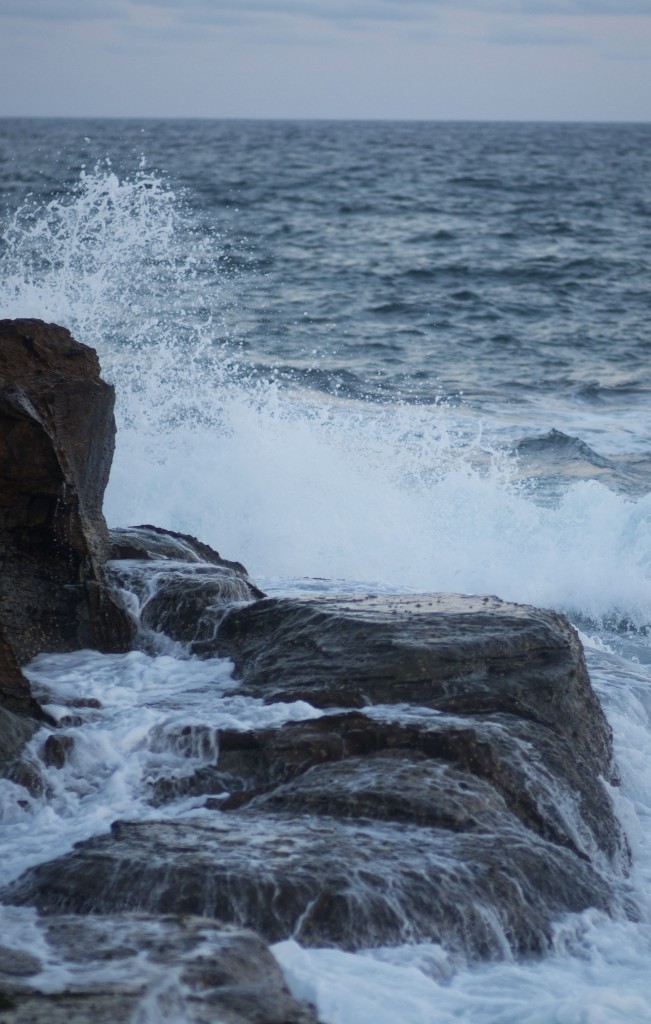
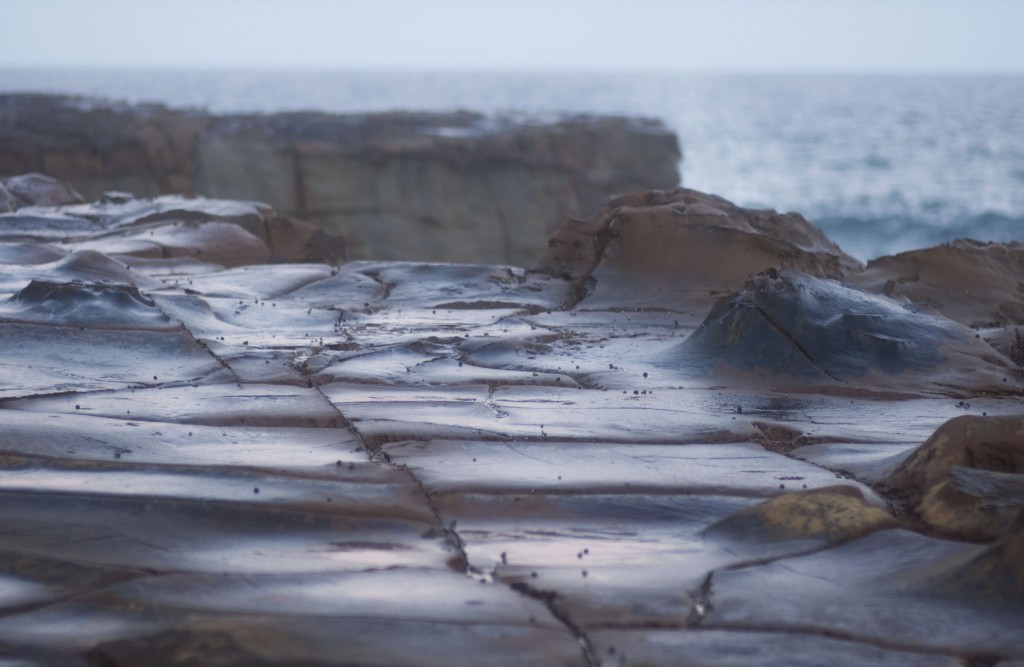
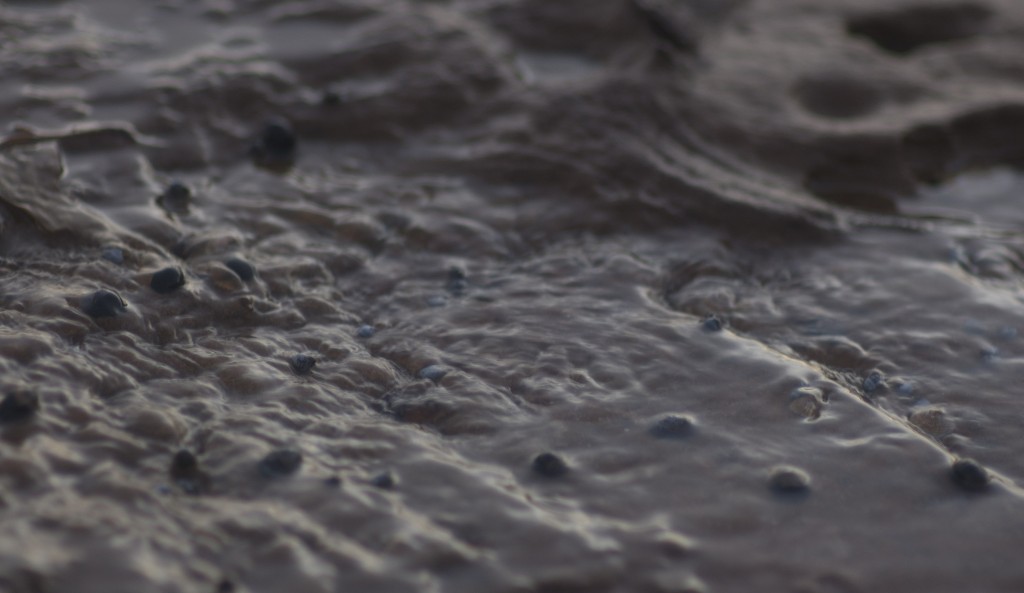
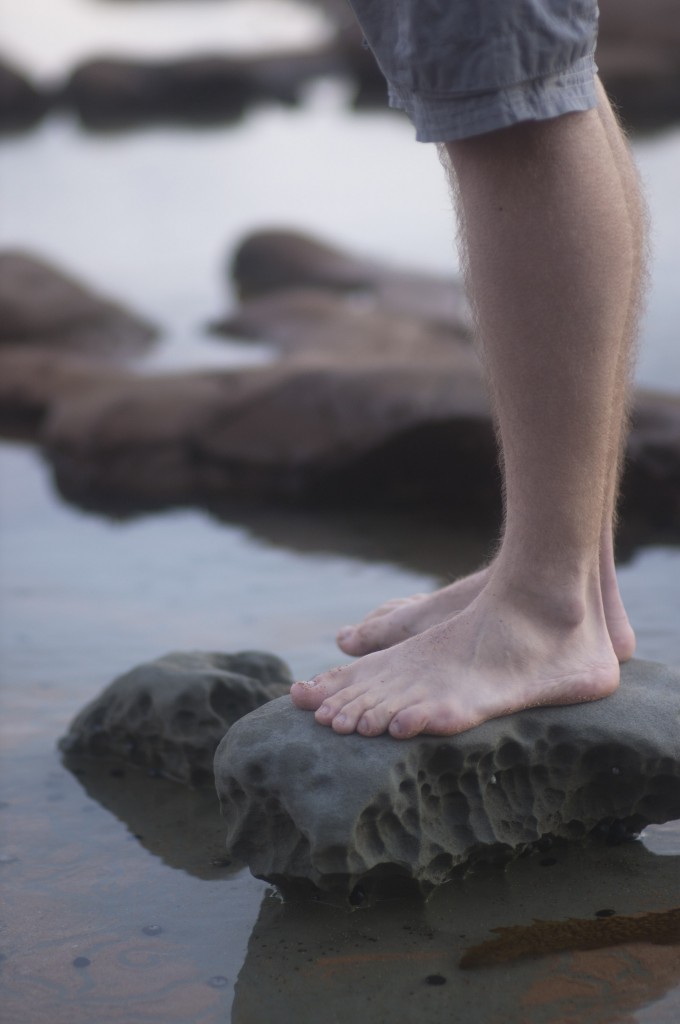
Ben’s photo of waves is perfect, yes!
In photo #4, I was extremely intrigued by the two very different-looking blotches along the bottom edge of the photo of the rock texture. Some kind of cavity in the surface with, maybe, light-colored snails in them? But a very regular pattern of blue-gray lines? Then I finally realized they were your toes & shoes.
haha, fantastic.
What is the explanation for the millions of rounded indentations in the rock? I’m trying to imagine volcanic activity looking like this, but can’t. And, since you said it’s sandstone, that crosses that guess off the list. Is that just erosion? And if so, why isn’t it eroded evenly? Hmm, I wonder if crustaceans were attached in those places and their “toe-holds” degraded the rock?
Amazing photos! Amazing colors! wow, wow, wow….
A small deformity in the rock causes extra loose sediment to collect. Wave action pushes the sediment against the rock, increasing the deformity. Over time, the feedback causes a hole.